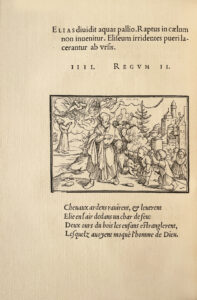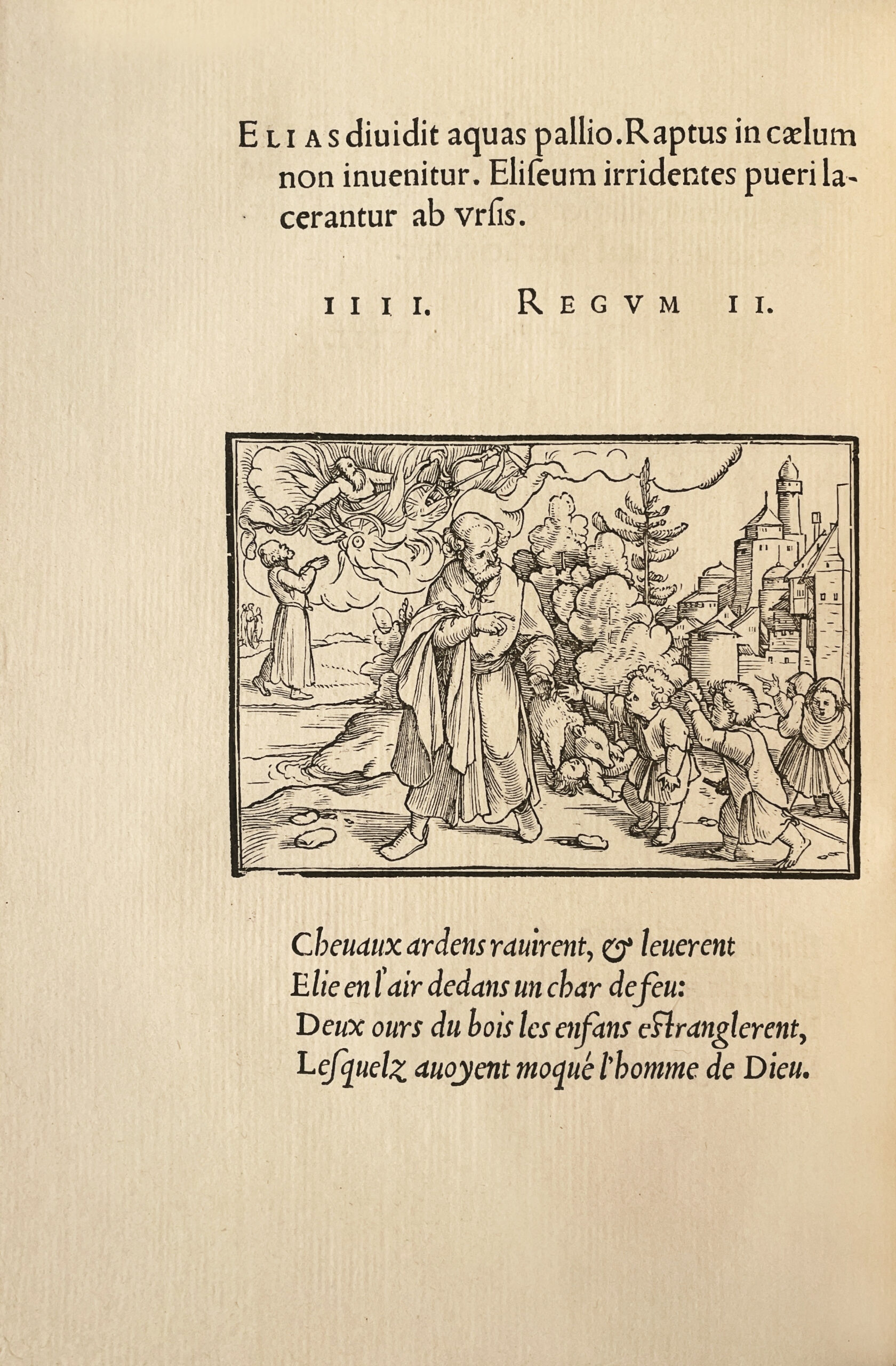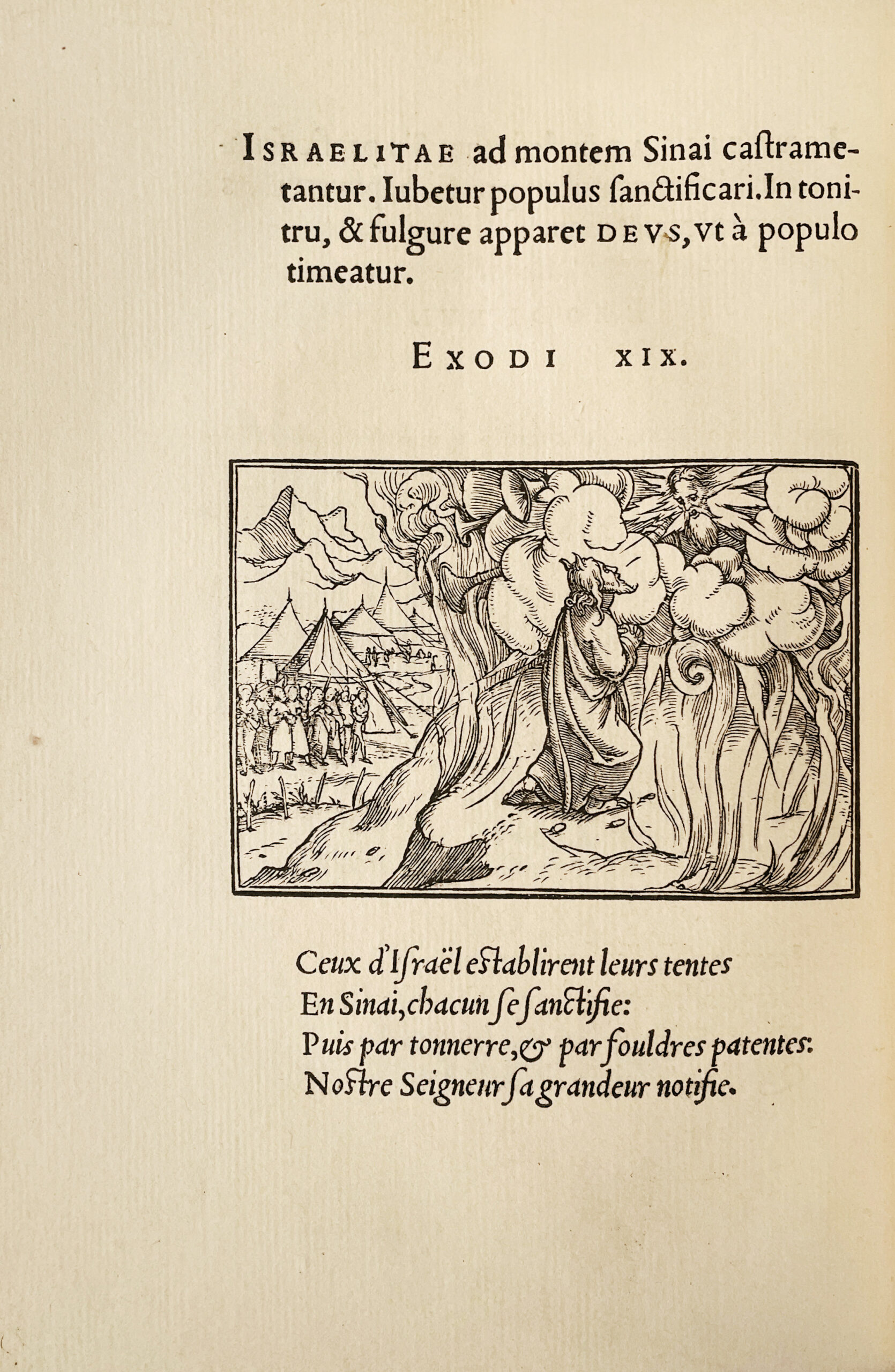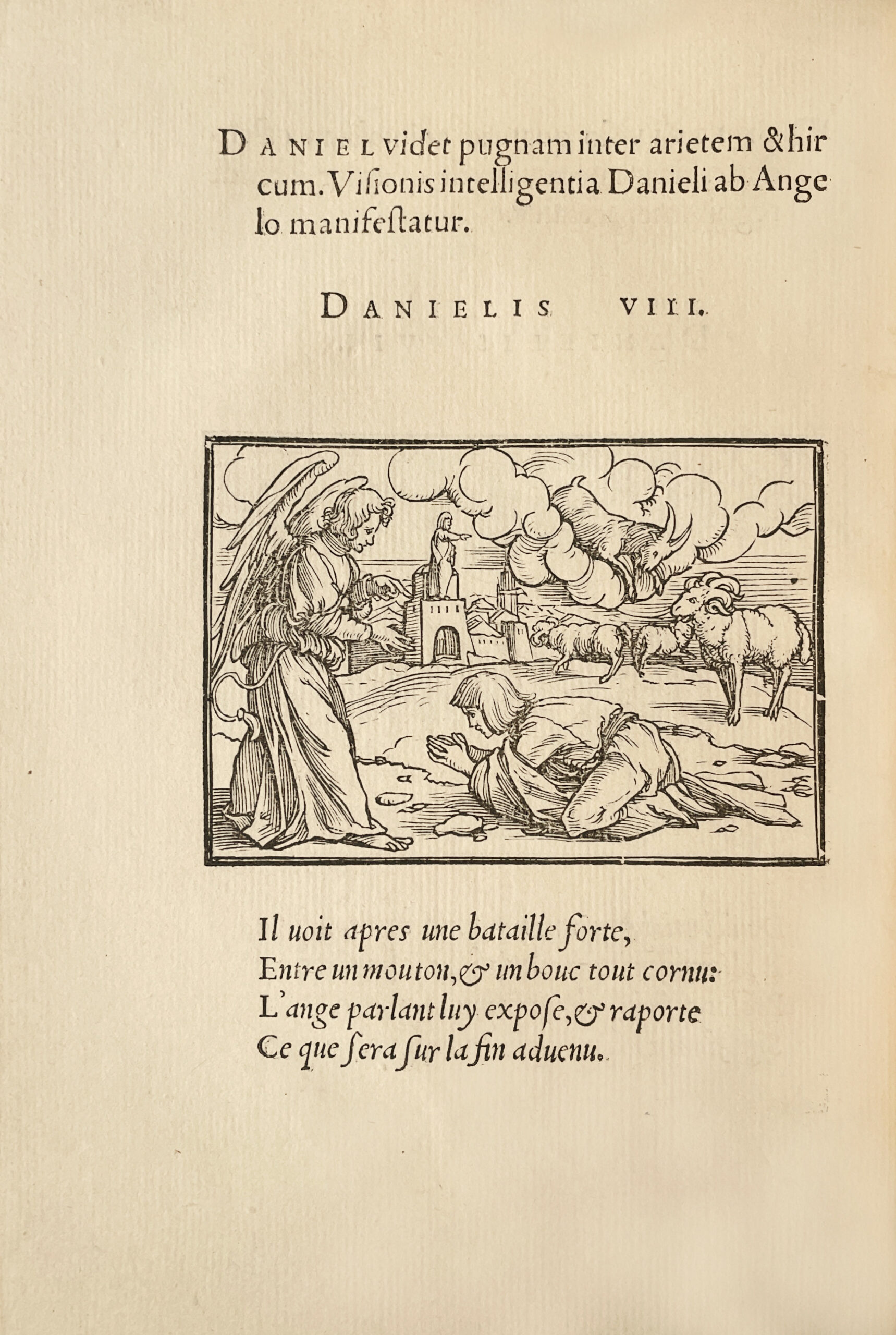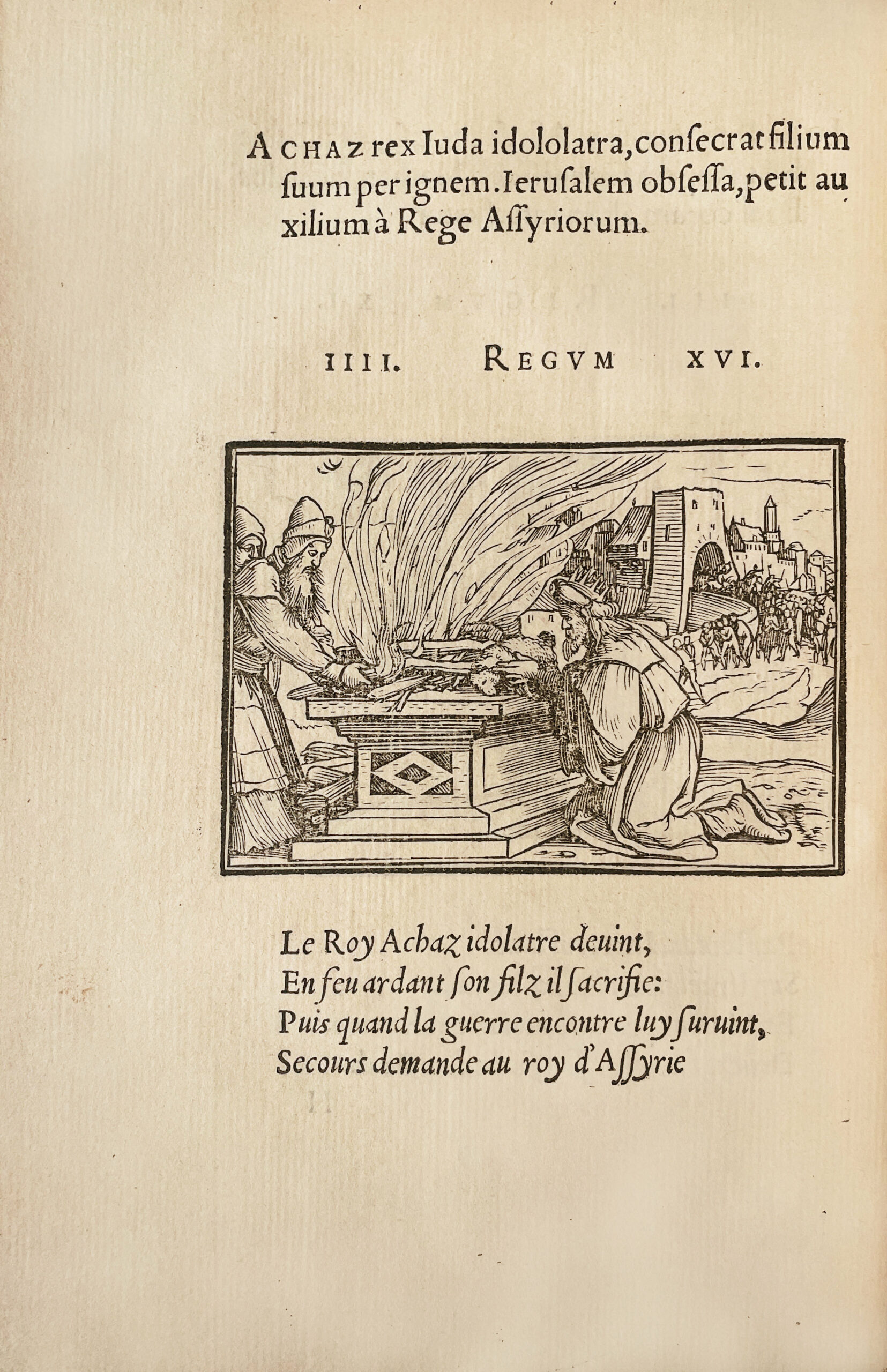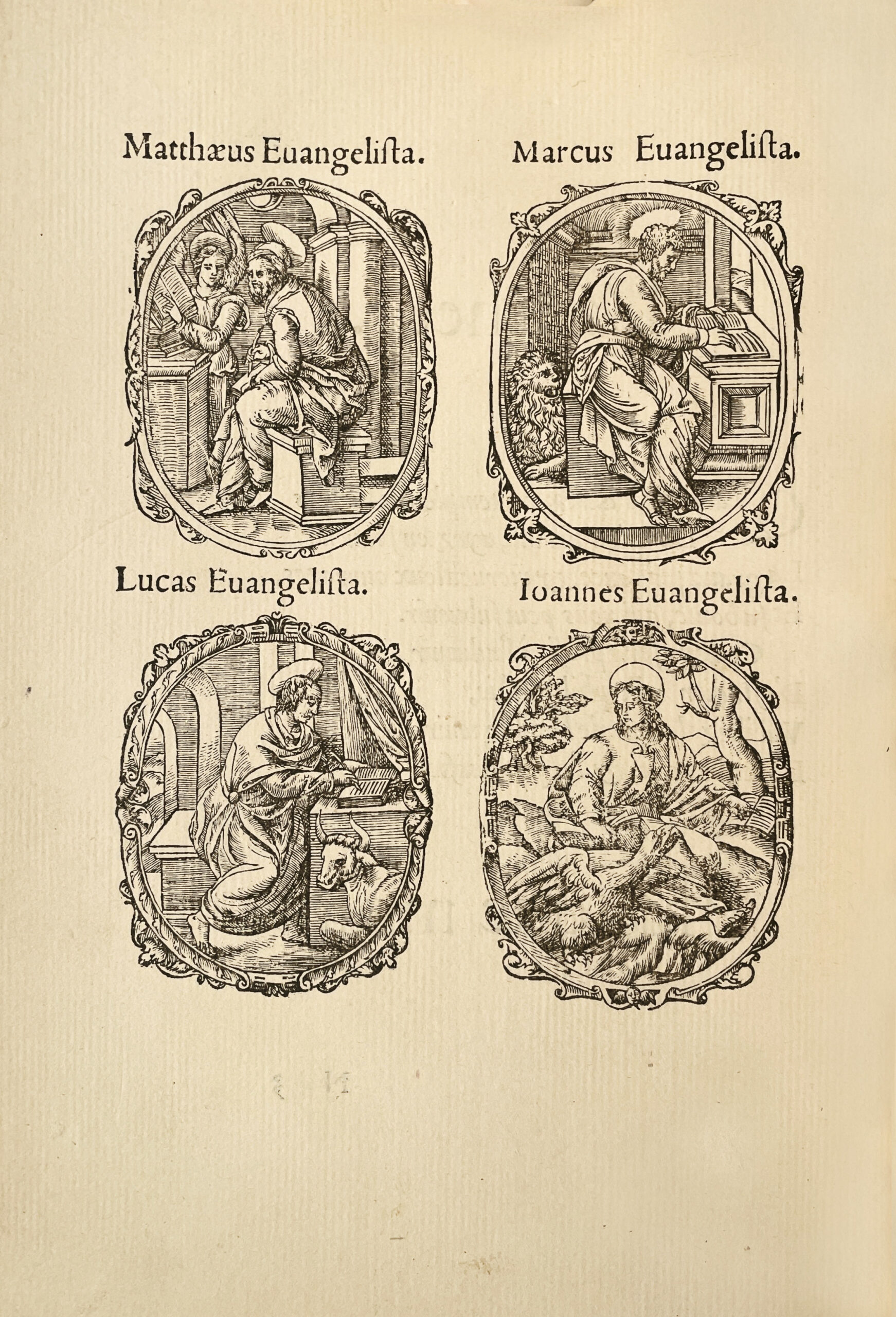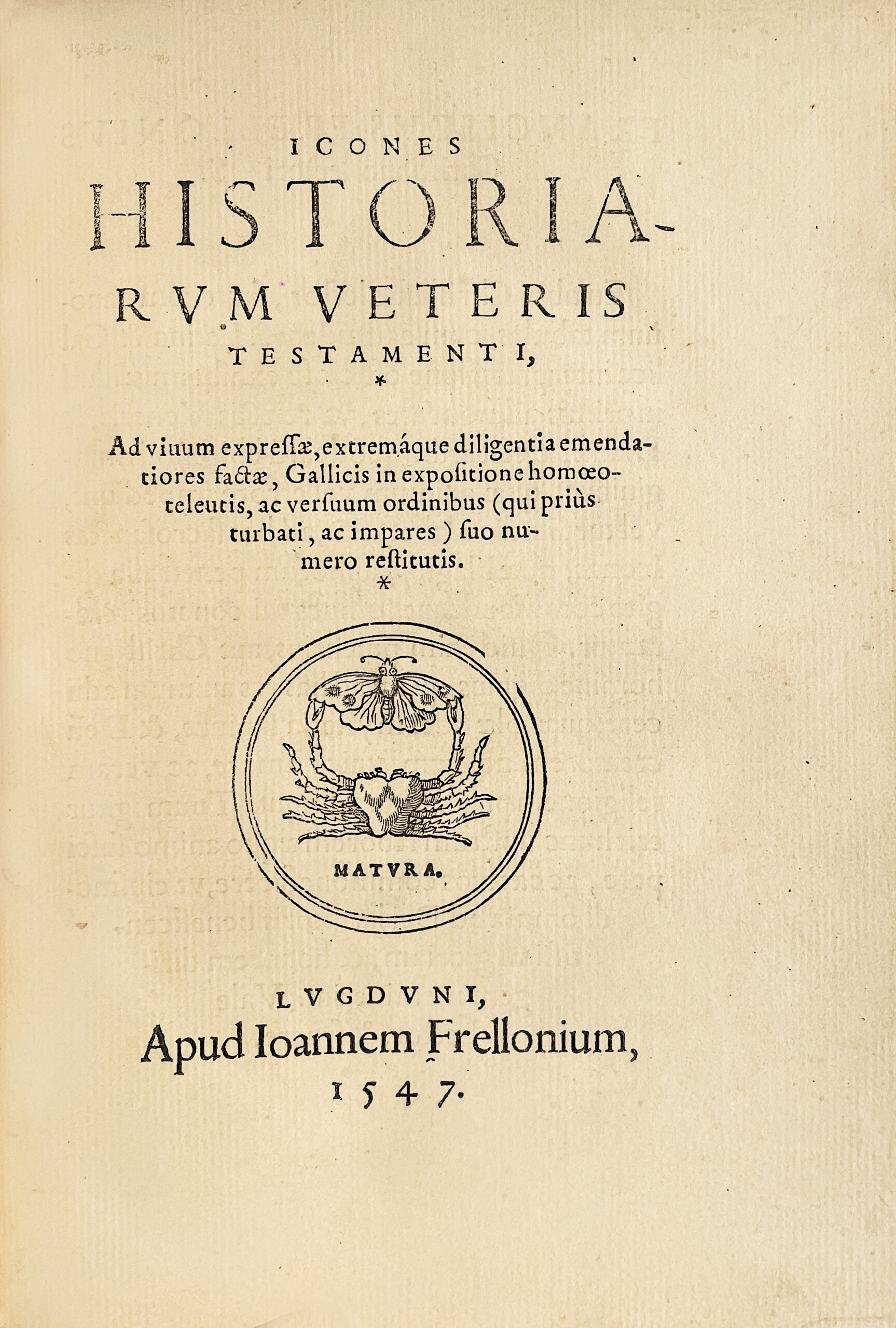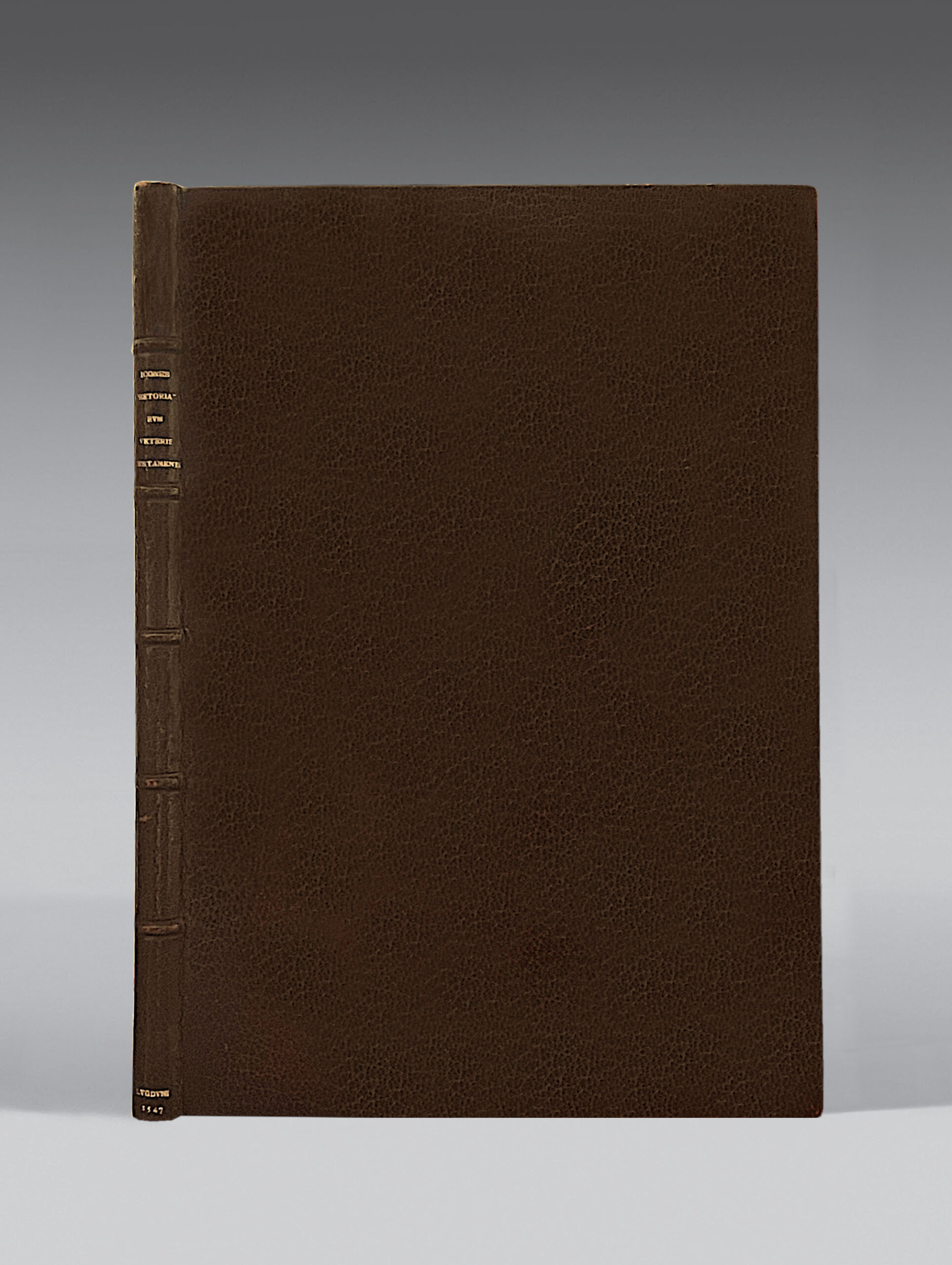Lugduni, Apud Ioannem Frellonium,1547.
Small 4to of (52) ll., sign. A-N, with 98 woodcuts, l. L2 remargined, brown Jansenist morocco, spine ribbed, gilt edges, gilt inner border. Chambolle-Duru.
198 x 135 mm.
First issue “of this beautiful book” (Brunet, supplément, 647), exceedingly rare with such wide margins (height 198 mm; it is taller than the superb copy of James de Rothschild.)
Harvard, 281; Baudrier, vol. 5, p. 209; Rothschild, vol. 1, n°16 ; Duplessis (op. cit. N°276), p. 60-62 ; Woltmann, Holbein, vol. 2, p. 172-173, e ; Bouchereaux, Corrozet, n°127 ; Didot, Essai, col.73.
Each one of the 94 Holbein’s engravings occupies a page with Latin text above and French quatrains by Gilles Corrozet below.
Didot, in his Essai sur la gravure sur bois analyzes what he calls a “masterpiece”:
“The compositions in this masterpiece are of the highest style, and, as in The Simulacra of Death, the expressions of the figures are righteous and offer a blend of simplicity, energy and naivety that characterize Holbein.”
“First edition of 1547. There were two editions of the Icones printed by Frellon in 1547. (These are often cited as issues, but the text was entirely reset.) This edition, described by Brunet (III, 252-253) and others as the earlier, may be identified by the fifth line of the title ending in “emenda-“, and the first line of the French text on leaf LIr ending in “uices”. A distinguishing feature of this edition is the use of v for u at the beginning of words in the Latin text. Brunet initiated a certain amount of controversy by quoting from E. Tross a theory that the second edition of 1547 (No. 282) was printed from clichés rather than from the original blocks. Both Hofer (op. cit. No. 276 ; p. 166-167) and Davies (Murray, vol. I, no. 244) reject the idea of clichage. On the basis of breaks in the woodblocks, Davies reverses Brunet’s order of the two editions, but evidence is introduced in the Hofer article to indicate that the condition of the blocks is in this case insufficient to prove priority. Aside from the woodcuts, the changes in the text support the order of editions given by Brunet. Comparison of the French text of 1539 with that of this 1547 edition shows that out of the ninety-four verses, fifty-one have from one to four lines revised. Signatures D and L are the only ones in which the text is unchanged. The text of the other 1547 edition corresponds to this one but has, in addition, seven of the eight quatrains in signature L revised. “(Harvard).
Known for their beauty and fine execution, these Icones are considered as a significant milestone in the illustrated book of the Renaissance.
Superb copy bound in Jansenist morocco by Chambolle-Duru, like the copy of James de Rothschild.
